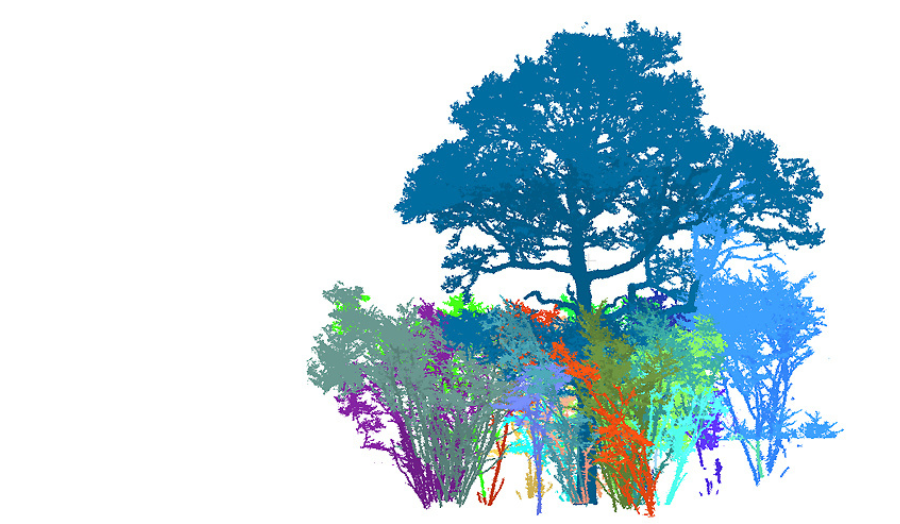In collaboration with the Nature Unlocked: Landscape Ecology Programme at Kew Gardens, Wakehurst, this study uses LiDAR imaging and eDNA sampling to quantify the carbon sequestration and biodiversity benefits of coppiced hazel timber. Data from this study will be used to help landowners, foresters and those designing wood products, to accurately quantify the ecological benefits coppiced hazel timber in southern England.

Image Caption: Terrestrial LiDAR scan (TLS) of hazel coppice. Credit: Mathilda Digby / Phil Wilkes, Royal Botanic Gardens, Kew.
Project details
Research Team
Professor George Fereday (PI), London Met
Phil Wilkes, Research Leader, Nature Unlocked: Landscape Ecology Programme, Kew Gardens, Wakehurst (Co-I)
Team members
Mathilda Digby, Research Assistant / Spatial Analyst, Carbon branch of the Landscape Ecology Project, Kew Gardens, Wakehurst
Project partner
Kew Gardens, Wakehurst
Funder
Rescaling fund 2023-4 London Met
Duration
December 2023 – September 2024
More about the project
- To measure the carbon sequestration of coppiced hazel woodland through LiDAR scanning and wood density measurements.
- To capture biodiversity metrics for coppiced hazel woodland through eDNA sampling of soil and water.
- To identify hazel trees for coppice thinning via a LiDAR digital-twin of the coppiced woodland.
Research dissemination
- Fereday, G (2025). ‘Unseasoned coppiced hazel roundwood: a regenerative, low-carbon alternative for agricultural buildings?’ The 6th International Association of Structures and Architecture, Faculty of Design Sciences, University of Antwerp from 8-11 July.
